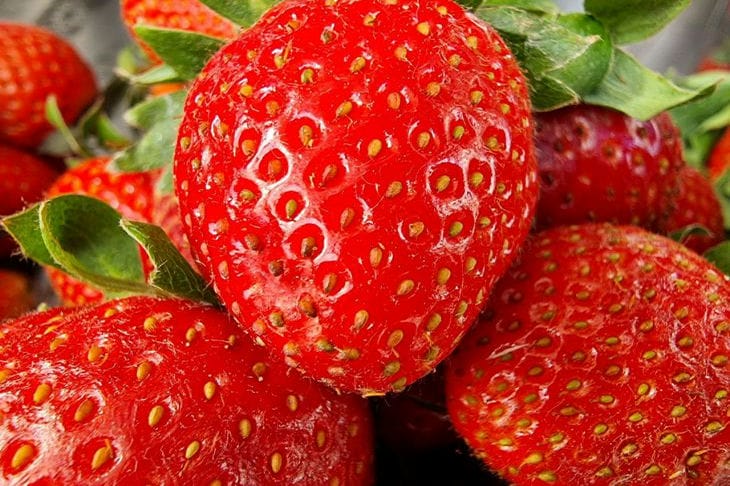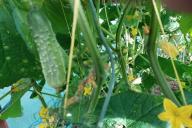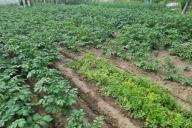If you do not have time to take the necessary measures, the entire berry plantation will be lost.
The main cause of rot on berries, both strawberries and other plants, is most often a fungus.
Fungi come in different varieties and they also cause different diseases - depending on the type of fungus, gray rot, white rot or black rot may appear on plants.

All these rots look different, but the process of their treatment is almost the same. Also, do not forget about the causes of rot.
Causes of rot infection (white, gray or black)
There are only three types of rot, and they mainly differ from each other only in the color of the rotten crust formed on the plants. Let's take a closer look at why these rots can appear.
Excess moisture
One of the main reasons for the appearance of one of the rots on the plant is excessive watering. If you water the strawberry too often or in large doses, then eventually it will become infected with one of the rots and die.
It turns out that you need to water the plant correctly so that it grows healthy and strong.
Incorrect watering of strawberries
Strawberries are a plant that likes frequent watering, but even they are harmed by excessive watering. With a large abundance of moisture, the plant will turn into an excellent habitat for various harmful microorganisms, which will quickly multiply inside it and cause harm. In order to accurately determine the required amount of water for watering, it is necessary to take into account several factors:
• Soil type;
• Air and soil temperature;
• Amount and frequency of precipitation;
• Location of the garden bed.
Under normal conditions, strawberries should be watered once every 4-5 days. If the soil base on which the strawberries grow is sandy, then the frequency of watering should be increased, but if the soil is clayey, it is worth watering less often, since all the moisture will remain at the roots of the plant for a long time, without being absorbed into such soil.
Also, the frequency of watering greatly depends on whether the sun hits the plants or not. It turns out that proper watering of strawberry plantings will protect the berries from over-watering and rot.
Rainy weather
The second, but no less important reason why berry plantings suffer. Logically, precipitation is the same as watering. The only difference is the fact that we cannot control their quantity and frequency.
However, plants can still be helped by minimizing the impact of rain:
• Rains can be long, up to several days, or even longer without a break. In this case, an ordinary film canopy on a wooden frame will be excellent protection for plants. It will easily protect plants from excess moisture;
• You can dig small grooves around the strawberry bushes. You should also poke a pitchfork into the ground near the plants - all this will help the moisture go into the ground faster, without lingering at the roots of the strawberries;
• Most harmful viruses and bacteria are always on the soil. During rains, they rise directly to the berries and can seriously damage their health. Therefore, in rainy weather, it is worth lifting the berry bushes. For this purpose, you can use an ordinary pitchfork, which can be bought at any hardware store, or a special support;
• After the berries ripen, they fall to the ground themselves. If this happens during rainy season, the berries will get dirty and, in addition, will become infected with diseases. To avoid such a combination of circumstances, a layer of mulch mixed with sawdust and straw is placed under the berry bushes. This way, the berries will fall on a clean surface and will remain untouched and healthy.
Lowland
It is recommended to plant strawberries in places with frequent sunlight, not exposed to strong winds.
Unfortunately, it is not possible to find such a place on every site, so in some cases there is no other option but to place strawberries in a lowland.
In the summer months, such a solution will generally be beneficial for strawberries - they will suffer less from the heat, and cool moisture will accumulate in the depressions.
However, sometimes the summer is rich in rain. In these cases, you need to use the same advice as before - spread sawdust under the berries, raise the bushes, etc.
It is also necessary to build a drainage system. Without it, the berry plantings will "choke" in water.
Drainage can be installed differently, depending on the depth of the plant roots in the soil. If excess moisture appears only in the spring, then surface drainage will cope with it. Ground drainage should be used only in cases where groundwater is located near the plant roots.
Planting density
The reason for strawberry rot may also be due to failure to maintain the minimum distance between bushes.
In this case, the strawberry bushes will cover each other with their branches as they grow, creating a lack of sunlight.
Also, the soil under the plants that are at the bottom will take a very long time to dry out after rain. Together, all these factors create an ideal environment for the reproduction of bacteria and fungi.
The correct distance between two strawberry bushes is at least 30 centimeters, up to 60 centimeters between two rows of strawberries. Whiskers can also cause infection of berry bushes.
If you do not cut them at least twice a season, they will attract harmful insects. Strawberry runners should be cut twice a season, at the beginning of the plant's growing season and after it has fruited.
Earlier we talked about how to turn clay soil into fertile black soil.








